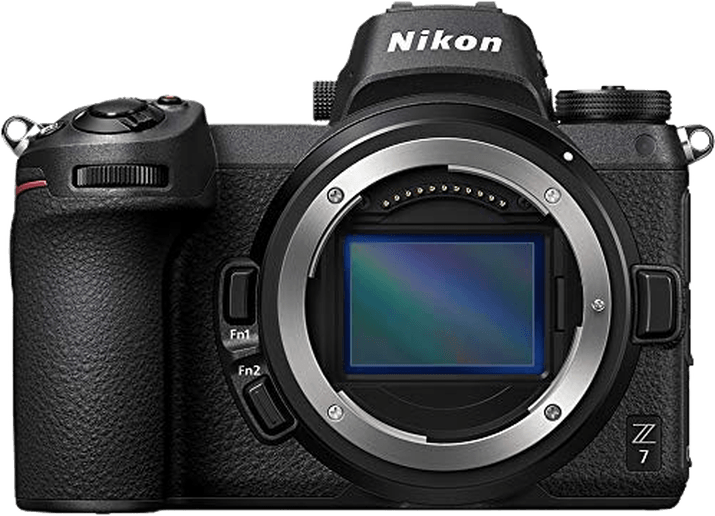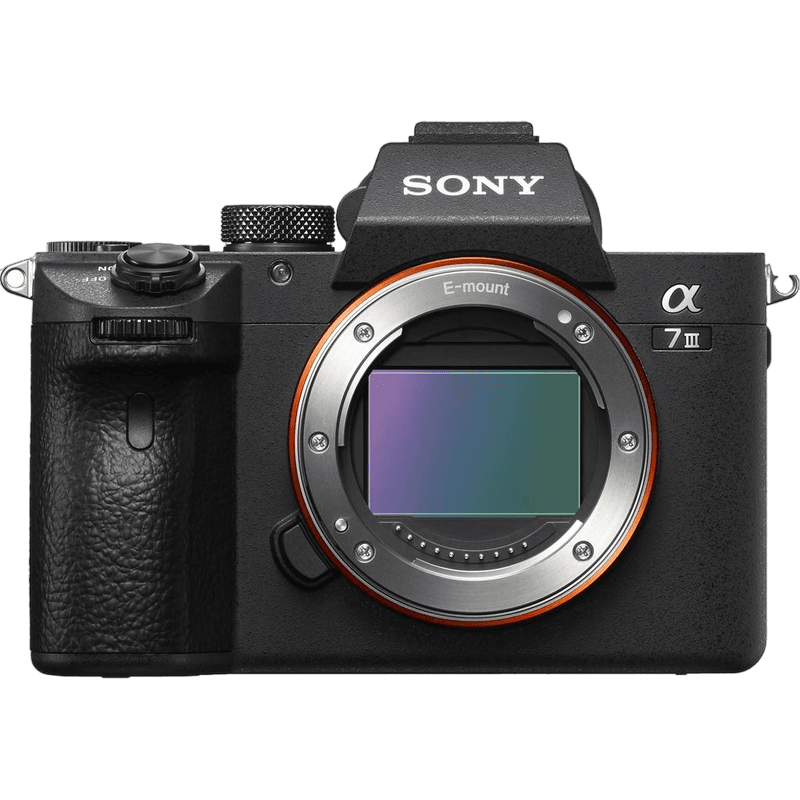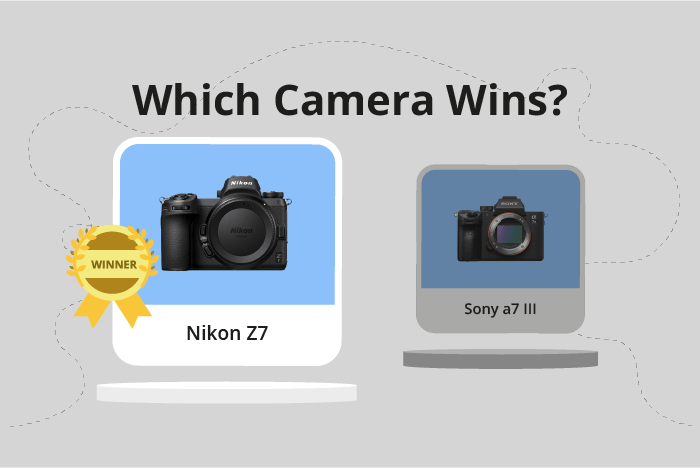Nikon Z7 vs Sony a7 III Comparison
Nikon Z7

Sony a7 III

The Nikon Z7 edges out the Sony a7 III with a score of 82/100 compared to the latter’s 81. Both cameras are mirrorless and were released in 2018, with the Nikon Z7 being announced in August and the Sony a7 III in February. They have similar sizes and weights, with the Nikon Z7 measuring 134 x 101 x 68mm and weighing 1.49lbs, while the Sony a7 III measures 127 x 96 x 74mm and weighs 1.43lbs.
Taking these factors into account, the Nikon Z7 stands out as the winner in terms of performance, while the Sony a7 III offers a more affordable option without compromising too much on quality.
Nikon Z7 vs Sony a7 III Overview and Optics
The Nikon Z7 outperforms the Sony a7 III in optics with a score of 86/100 compared to 81/100. Both cameras share common specifications, including a CMOS sensor, full-frame sensor size, and image stabilization. They also have different lens mounts, with the Nikon Z7 using a Nikon Z mount and the Sony a7 III using a Sony FE mount.
The Nikon Z7 excels in several areas. It has a higher megapixel count of 45.7, while the Sony a7 III has 24.2 megapixels. This difference allows the Nikon Z7 to capture more detailed images. Additionally, the Nikon Z7 has a superior DXOMARK sensor score of 99, compared to the Sony a7 III’s score of 96. The Nikon Z7’s Expeed 6 processor also contributes to its better performance in image processing and overall image quality.
On the other hand, the Sony a7 III has a slightly faster shooting speed of 10 frames per second, compared to the Nikon Z7’s 9 frames per second. This advantage may be beneficial for photographers who prioritize capturing fast-moving subjects. However, the difference in shooting speed is minimal and may not be significant for most users.
Considering the higher score and better specifications, the Nikon Z7 proves to be the superior camera in terms of optics. Its higher megapixel count and better sensor performance make it a more powerful choice for photographers who prioritize image quality. While the Sony a7 III has a marginally faster shooting speed, the overall advantages of the Nikon Z7 make it the better option for most users.
Nikon Z7 vs Sony a7 III Video Performance
The Nikon Z7 outperforms the Sony a7 III in video capabilities, with a video score of 83/100 compared to the Sony’s 70. Both cameras share similarities in their video specifications, such as a maximum video resolution of 4K and maximum video dimensions of 3840 x 2160. However, there are notable differences in their video performance that favor the Nikon Z7.
The Nikon Z7 surpasses the Sony a7 III with a higher maximum video frame rate of 60fps, compared to the Sony’s 30fps. This higher frame rate allows for smoother video playback and the ability to create slow-motion footage, providing more versatility in video production.
On the other hand, the Sony a7 III still offers impressive video capabilities despite its lower score. With a 4K video resolution and maximum video dimensions of 3840 x 2160, it can produce high-quality footage suitable for various purposes. However, its lower video frame rate limits its versatility compared to the Nikon Z7.
Nikon Z7 vs Sony a7 III Features and Benefits
The Nikon Z7 outperforms the Sony a7 III in the features category, with a score of 87/100 compared to the Sony’s 81/100. Both cameras share several specifications, such as a touchscreen, flip screen, WIFI, Bluetooth, and the absence of GPS. However, there are key differences that contribute to the Nikon Z7’s higher score.
The Nikon Z7’s screen size is larger, at 3.2 inches compared to the Sony a7 III’s 3 inches. This difference allows for better visibility and an enhanced user experience. Moreover, the Nikon Z7 offers a significantly higher screen resolution of 2,100,000 dots, compared to the Sony a7 III’s 921,600 dots. The higher resolution results in a sharper and more detailed display, giving the Nikon Z7 a clear advantage in this aspect.
Despite the lower score, the Sony a7 III does have some advantages over the Nikon Z7, although not in the area of features. The Sony a7 III is known for its excellent autofocus system and longer battery life, both of which can be important for certain types of photography.
Taking these points into account, it is evident that the Nikon Z7 surpasses the Sony a7 III in terms of features, mainly due to its larger and higher-resolution screen. However, it is essential to consider the specific needs of the photographer when choosing between the two cameras. While the Nikon Z7 offers a better display and overall feature set, the Sony a7 III might be the preferred choice for photographers who prioritize autofocus performance and battery life.
Nikon Z7 vs Sony a7 III Storage and Battery
The Sony a7 III triumphs over the Nikon Z7 in storage and battery with a score of 81 compared to the Nikon’s 33/100. Both cameras have USB charging capabilities, allowing for convenient charging options.
The Sony a7 III excels with two memory card slots, accepting SD/SDHC/SDXC and Memory Stick Duo/Pro Duo/Pro-HG Duo cards, providing more storage flexibility. Additionally, its battery life is more than double that of the Nikon Z7, with 750 shots per charge using the NP-FZ100 battery.
The Nikon Z7, on the other hand, has a single memory card slot accepting only XQD cards and a battery life of 330 shots using the EN-EL15b battery. Despite its lower score, the Nikon Z7 still offers USB charging, which the Sony a7 III lacks.
Taking these factors into consideration, the Sony a7 III clearly outperforms the Nikon Z7 in terms of storage and battery life. This makes it a more practical choice for longer shooting sessions and increased storage options.
Nikon Z7 vs Sony a7 III – Our Verdict
Are you still undecided about which camera is right for you? Have a look at these popular comparisons that feature the Nikon Z7 or the Sony a7 III:

